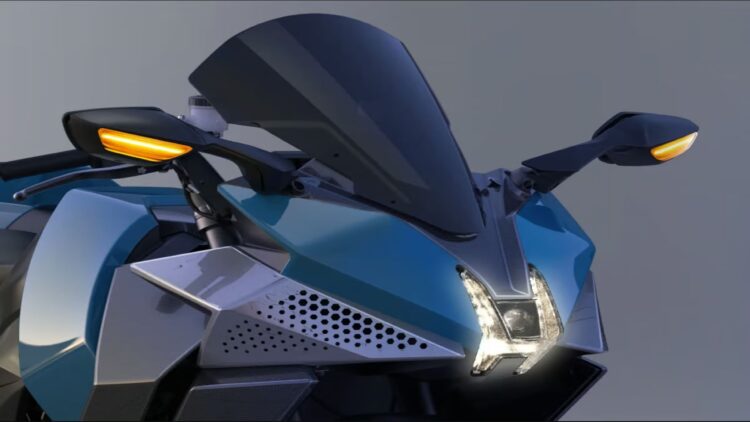Motorcycle enthusiasts have long debated the merits of gasoline versus electric-powered bikes, but a new, game-changing contender has arrived. Japan’s Kawasaki has unveiled the Ninja H2 HySE, a radical motorcycle that merges hydrogen fuel cell technology with electric motors to create a hybrid superbike capable of unprecedented performance and eco-friendly operation. This futuristic motorcycle signals a major shift in the world of high-speed bikes, blending cutting-edge technology with Kawasaki’s signature style and commitment to performance.
The revolutionary powertrain
At the heart of the Ninja H2 HySE lies its groundbreaking powertrain: a hybrid system that combines a hydrogen fuel cell, lithium-ion battery pack, and electric traction motor. Unlike conventional internal combustion engines or traditional electric motors, this setup operates in an entirely different manner. The hydrogen fuel cell converts hydrogen into electricity, which then powers the bike’s electric motor. This design not only eliminates tailpipe emissions but also produces nearly instant torque which delivers acceleration that rivals that of a jet turbine.
The HySE’s powertrain generates an impressive 134 horsepower, allowing the bike to accelerate from 0-60 mph in about 3 seconds, with an estimated top speed of over 100 mph. This remarkable performance is achieved while maintaining a curb weight under 500 lbs, making the HySE an exceptionally agile machine. The bike’s hydrogen tank, capable of holding 3.5 liters of fuel, provides a range of over 93 miles, with refueling as quick and easy as filling up a gasoline tank.
This hybrid system also introduces smart regenerative braking, which captures kinetic energy and recharges the battery as the bike slows down. The system’s ability to adapt to road conditions using rear-wheel lift sensors ensures smooth, controlled deceleration without unnecessary drama. As hydrogen fuel infrastructure expands, Kawasaki envisions this powertrain becoming a practical and sustainable option for future motorcycles.
Futuristic design and technology
Kawasaki’s Ninja H2 HySE takes styling cues from the brand’s high-performance H2 series, featuring an aerodynamic design honed for stability at high speeds. Its aggressive styling includes an exposed trellis frame, faceted front cowl, and low clip-on handlebars that give the bike a fierce, race-ready appearance. The bike also features LED lighting and intricate details like angular mirror stalks with integrated turn signals and chin-mount cameras in place of traditional mirrors.
Inside the cockpit, the HySE boasts a full-color TFT display that provides real-time riding data. The bike’s semi-exposed chassis components not only highlight its futuristic design but also contribute to its weight-saving ethos which is key to its impressive speed and handling. The frame and swingarm are crafted from lightweight materials, ensuring that the bike’s total weight stays under 500 lbs which is an essential factor for optimal performance.
Furthermore, the HySE is equipped with state-of-the-art technology, including a 6-axis Inertial Measurement Unit (IMU), lean-sensitive traction control, cornering ABS, and semi-active suspension. These high-tech features allow for precise adjustments in real-time to ensure maximum stability, traction, and braking power in a wide range of riding conditions.
Performance and the future of motorcycling
While the Ninja H2 HySE is still a concept, Kawasaki has made it clear that performance remains at the forefront of its vision. The bike is not just an eco-friendly experiment but is designed to be a serious competitor in the world of superbikes. Its seamless torque delivery and jet turbine-like acceleration provide a riding experience that remains exciting and thrilling, even as the bike shifts toward cleaner energy.
The HySE offers a compelling glimpse into the future of motorcycling, where hydrogen-powered bikes could rival their gasoline counterparts in terms of speed and agility, but with the added benefit of zero emissions. Kawasaki’s forward-thinking design is a bold step toward a more sustainable future, yet it doesn’t compromise on the high-performance attributes that riders crave.


